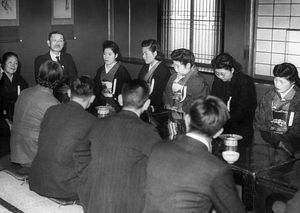The Japanese government has been slapped with lawsuits by four victims of forced sterilization carried out under the previous Eugenic Protection Law. With more lawsuits on the way, victims are demanding a public apology and compensation for the psychological trauma and physical harm they endured thanks to a previous government policy targeting disabled and mentally ill residents across Japan.
After World War II, as the world was gradually realizing the horrors of Nazi Germany’s sterilizations and other crimes against humanity, Japan’s own eugenic ideology was taking off. In 1948, Japan’s population policy was tightly controlled by the now defunct Eugenic Protection Law, which authorized the prevention of “inferior” offspring.
Under the law, in place until 1996, as many as 25,000 people with intellectual disabilities, mental illness, and hereditary diseases were subjected to sterilization. Existing records show 8,500 gave consent — although under pressure and threats — while 16,500 people underwent forced sterilizations, including girls as young as 9 years old.
A women from Miyagi prefecture, north of Tokyo, was the first to file a civil lawsuit seeking $104,00 in compensation. As a teenager, the woman, now in her 60s, underwent forced sterilization when diagnosed with a mental disorder in 1972. She says the surgery left her with chronic stomach pain and a prospective marriage was also broken off. In a press conference, while represented by her sister-in-law, the plaintiff urged the government to take responsibility and own up to their wrongdoings.
This is the first time victims have publicly come forward, in the process exposing Japan’s deep-rooted prejudices against the disabled and their reproductive rights. The government is bracing for more lawsuits after a nationwide hotline was launched by a team of lawyers on Monday — 55 cases were reported on the first day alone. The unprecedented case is up against a 20 year statute of limitations but will draw on State Redress Law to prove malpractice in failing to assemble a compensation system after the law was scrapped.
The ruling LDP and Komeito Party coalition announced the creation of a working group focusing on relief for victims and proposed a nationwide survey regardless of the outcome of the lawsuits.
Countries with similar sterilization policies, such as Sweden and Germany, ceased those operations in 1976 and introduced compensation after 1980. However, Japan’s Ministry of Health, Labor, and Welfare insists that the surgical procedures were legal at the time and has demanded the pending civil lawsuits be dismissed. They vowed to fight back in court on the basis that the surgeries underwent strict panel review before approval.
However, archives reveal that the proper process to approve surgery was not upheld in at least eight cases. The final go ahead for surgery was supposed to be determined after a panel committee meeting made up of a doctor, a welfare officer, a judge, a public prosecutor, and an academic. But scheduling conflicts between panel members saw some applications approved only by the face value of medical documents.
Plus, in 1964, when sterilization trends began to fall, quotas were introduced and patients suffering from hereditary “abnormalities” not explicitly covered in the Eugenic Protection Law began to be targeted. These victims’ sterilization applications had to be falsified to fit a disease listed in the law.
The extent of known government misconduct barely scratches the surface, with only 20 percent of original records intact.
Eugenic proposals in Japan’s parliament originally aimed to protect women’s reproductive rights by allowing abortions and in turn achieve selective birthing and genetic “efficiency” as a way to reduce women’s burden as breeding machines to support the military.
But the return of soldiers from the battlefield heightened an era of food provisions and kickstarted Japan’s first baby boom. The bill was unanimously passed when rebranded as countermeasures against food shortages by socialist and conservative party politicians. Criticisms of totalitarianism by the opposition were quashed in favor of pursuing “public interest” for the sake of the country’s reconstruction. At the time restraining those with disabilities was not considered unjustified.
Women bore the brunt of the eugenic campaign, making up 70 percent of the victims. What’s more, as many as 60,000 women had forced abortions based on the idea that women with disabilities should not reproduce. The law was phased out by 1992 and eventually abolished in 1996, thanks to heavy public campaigning in the 1970s.































